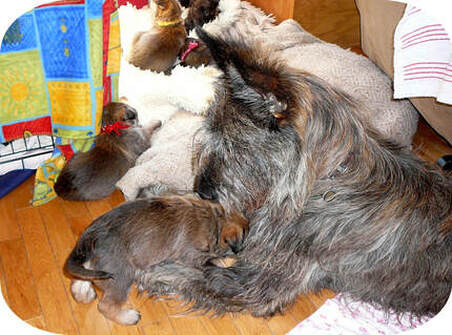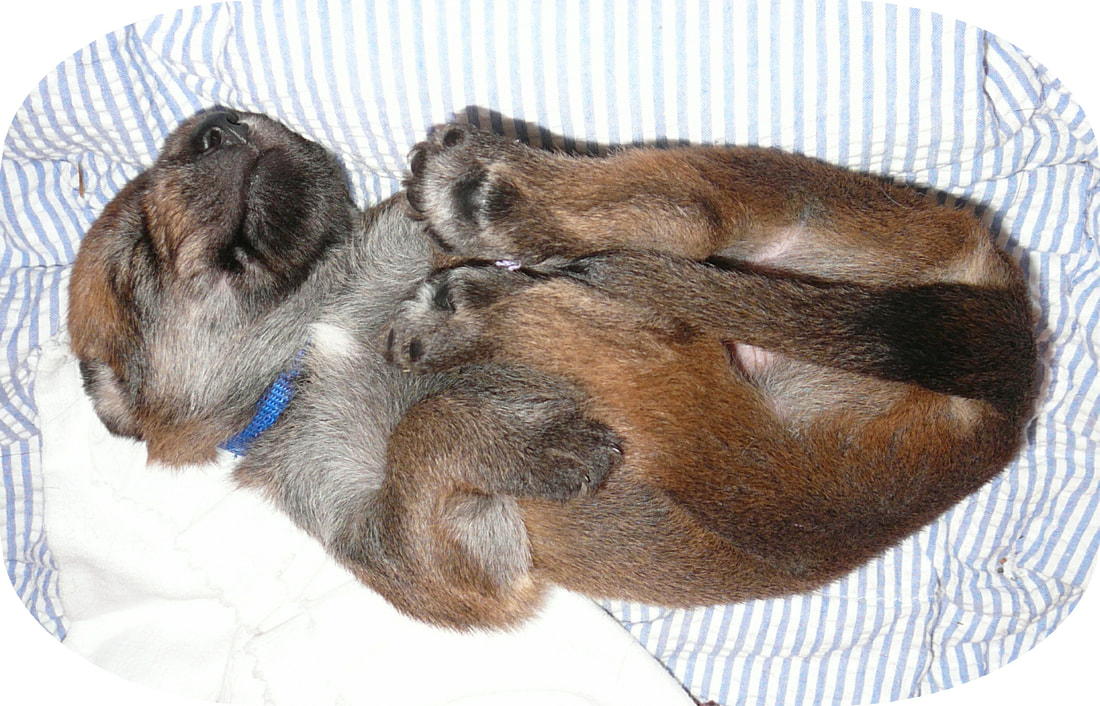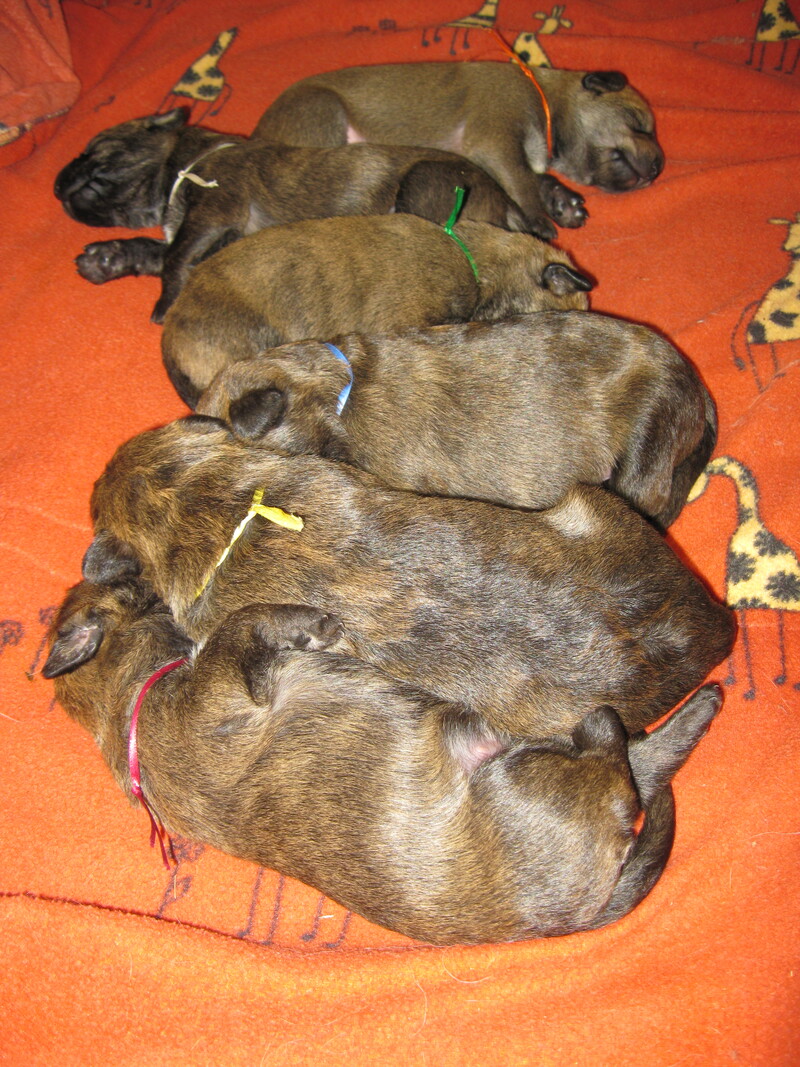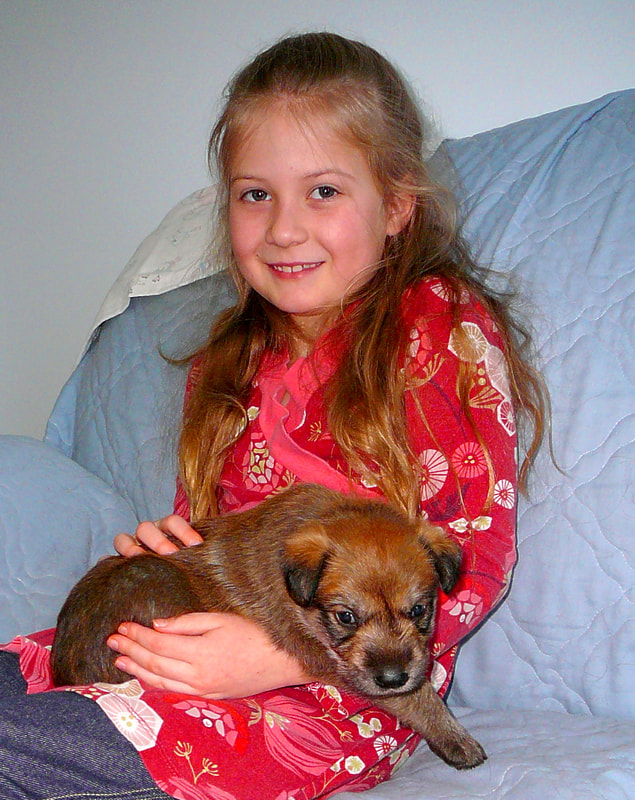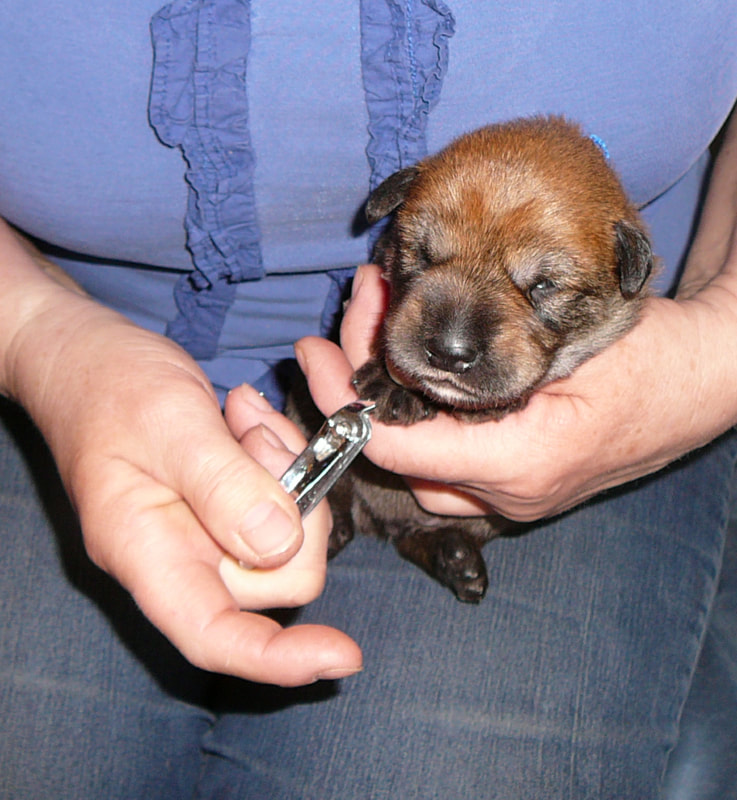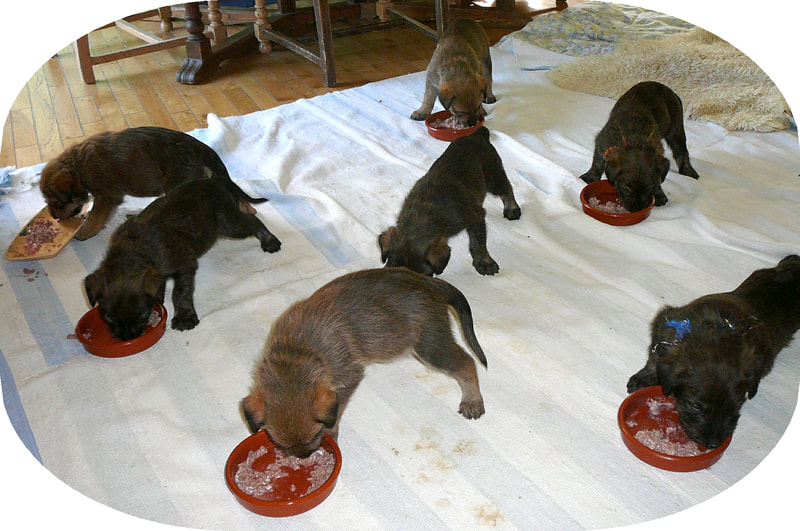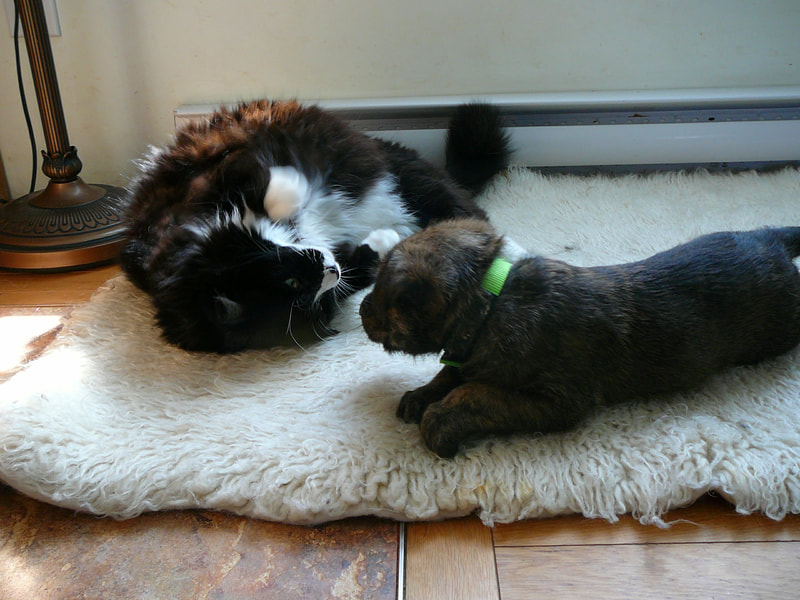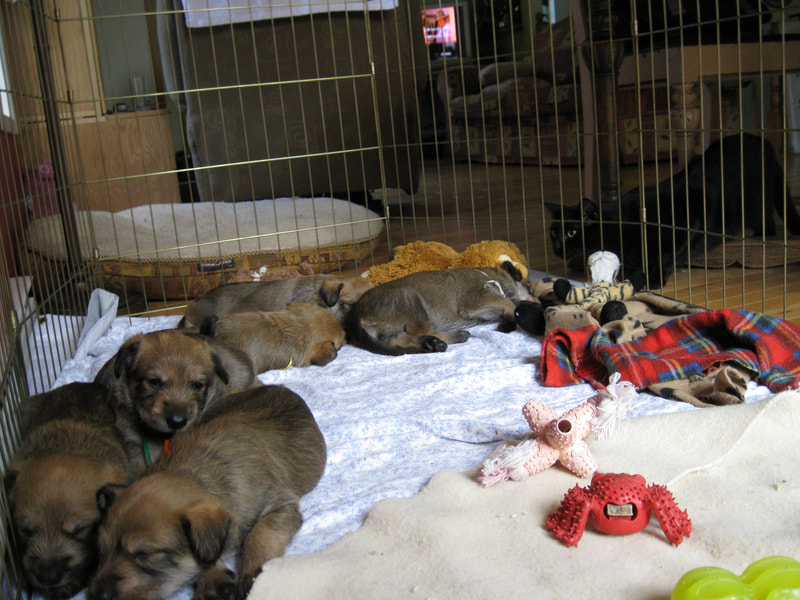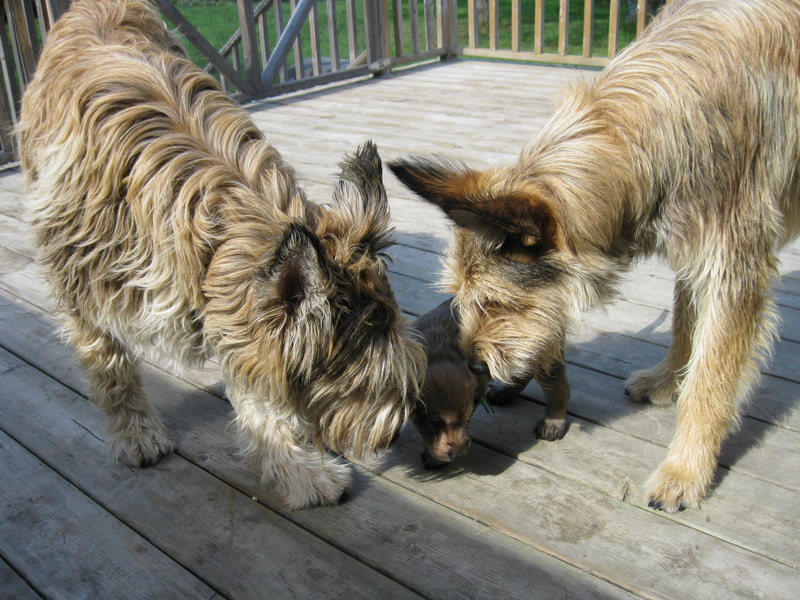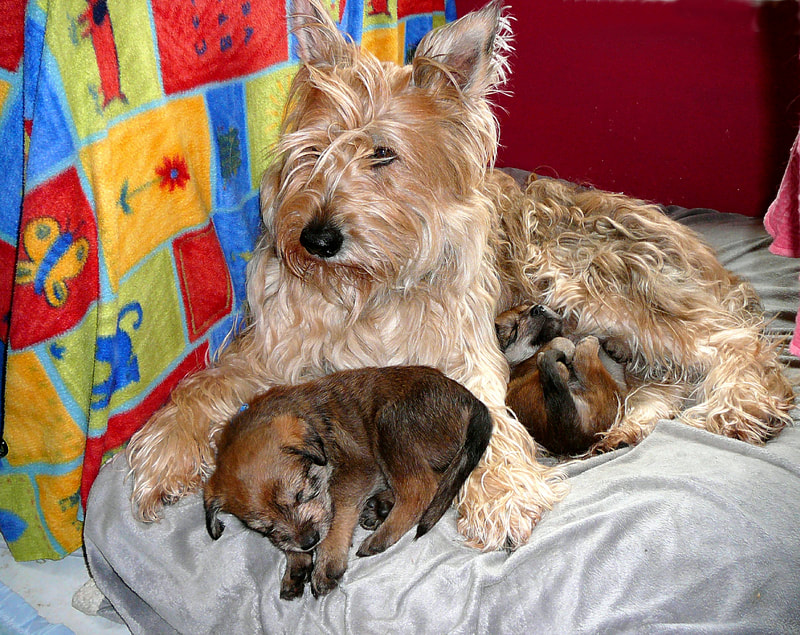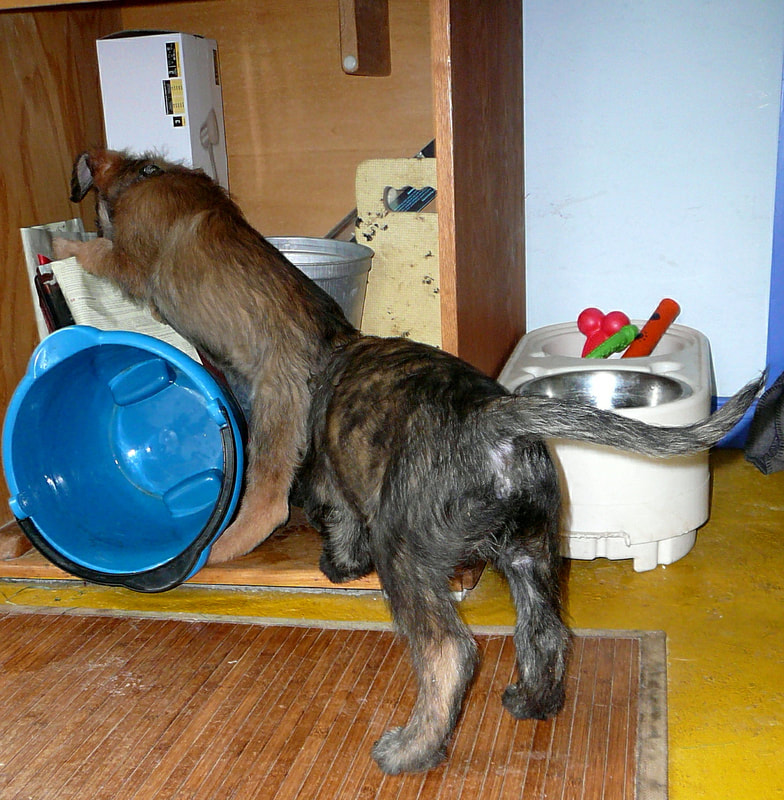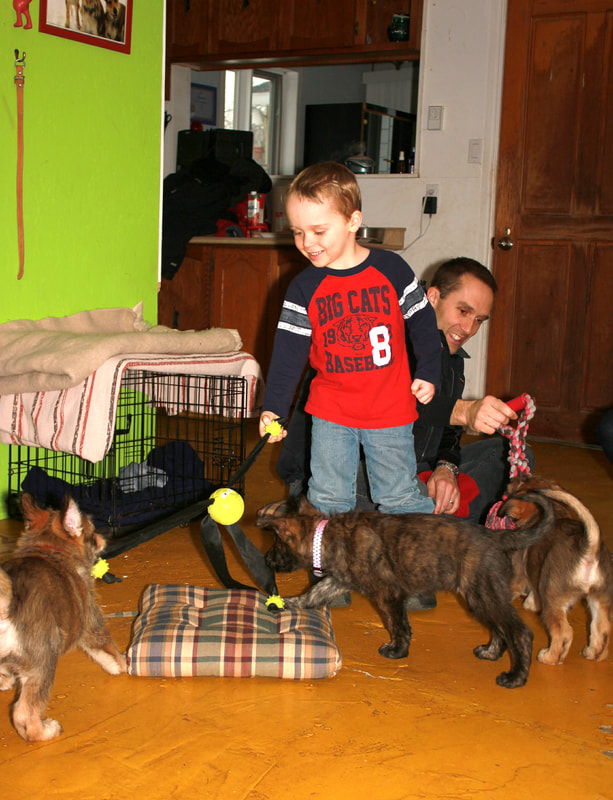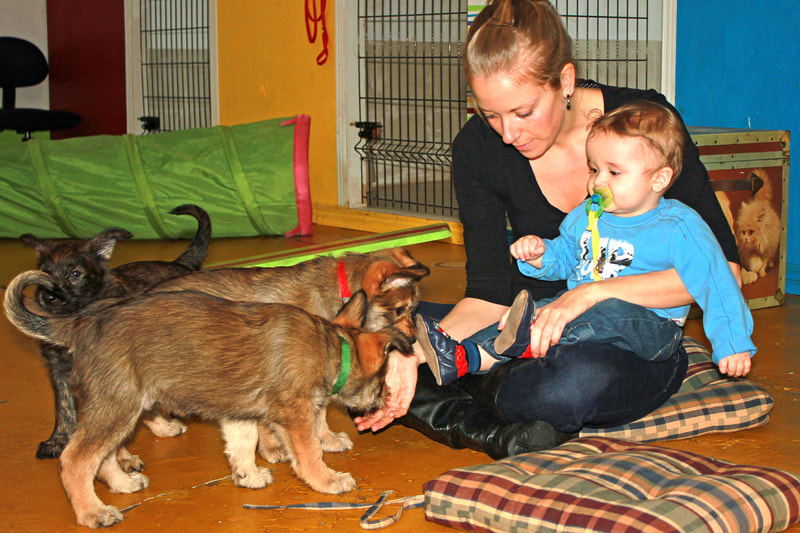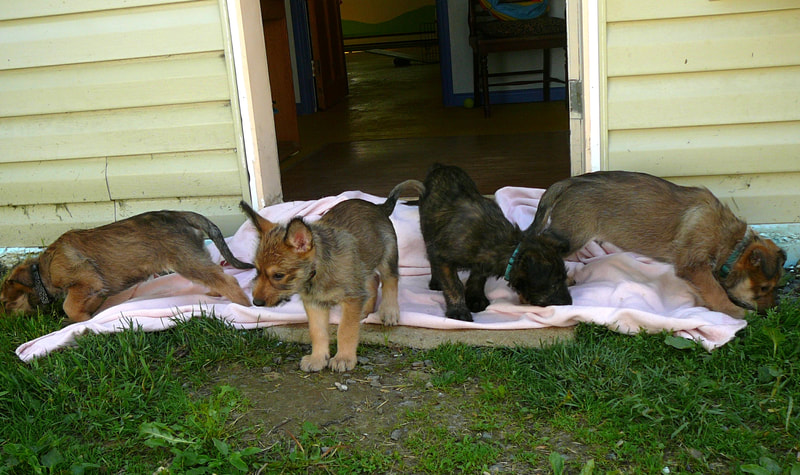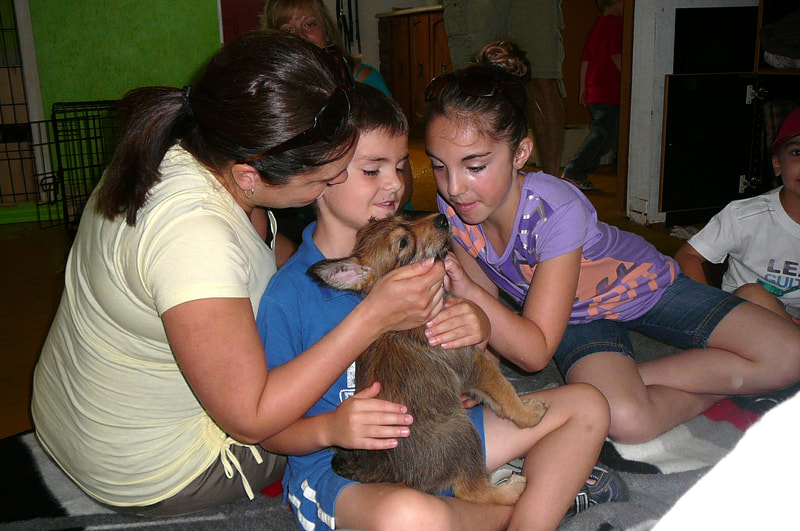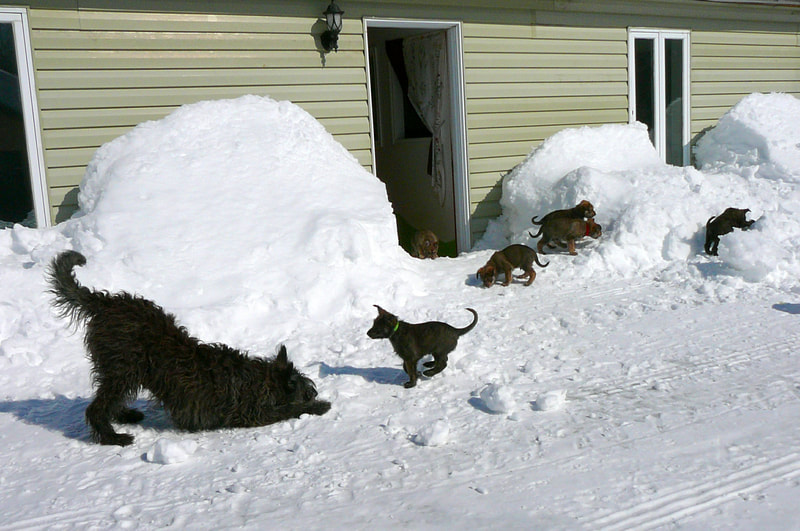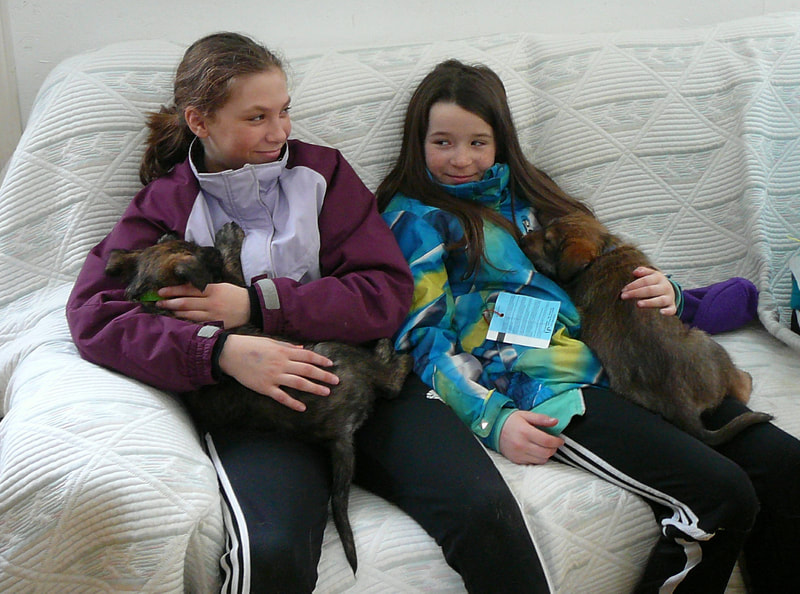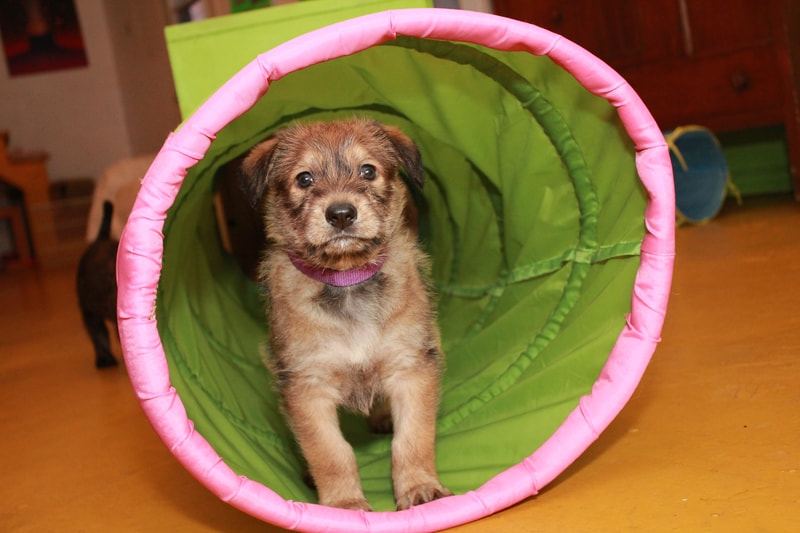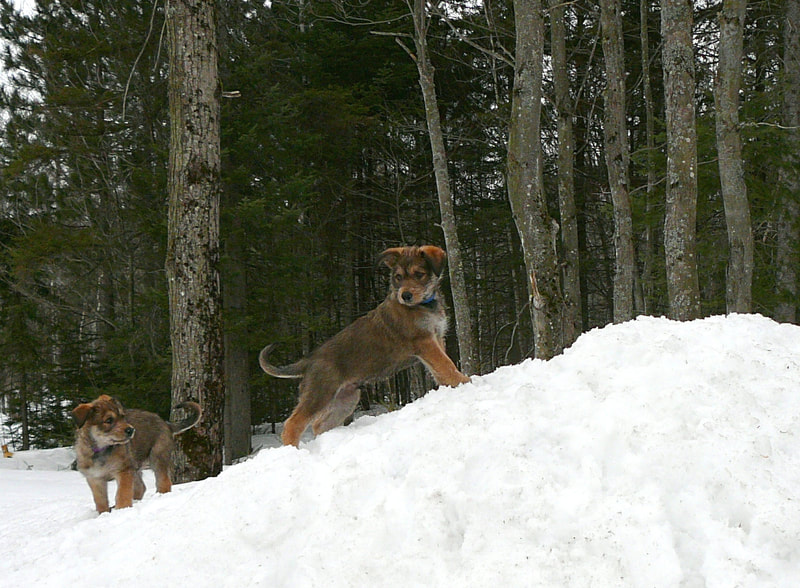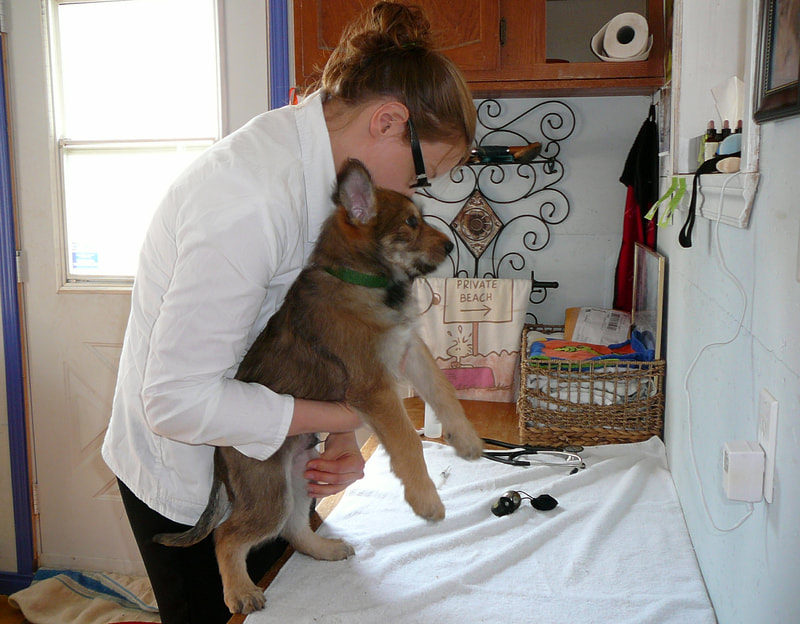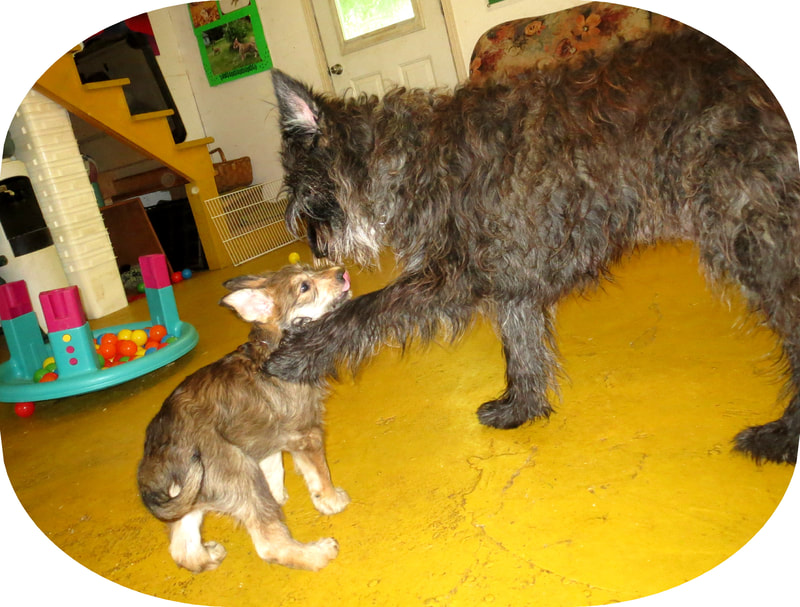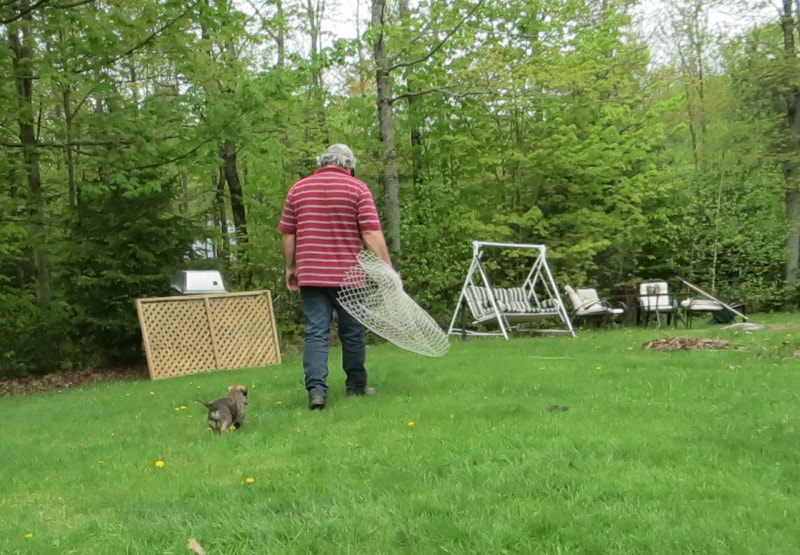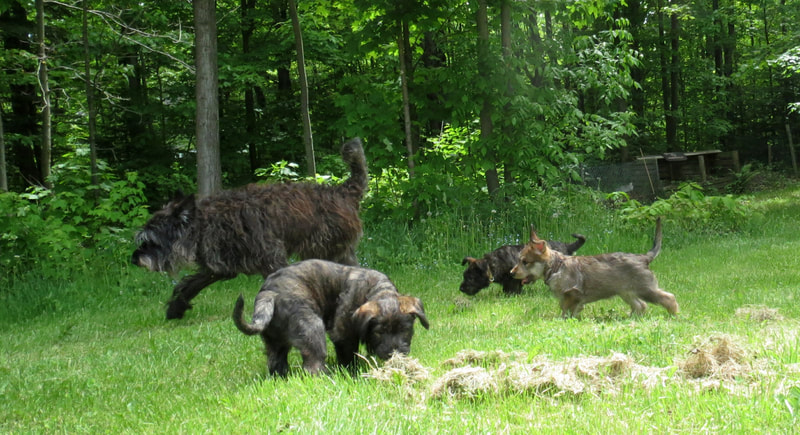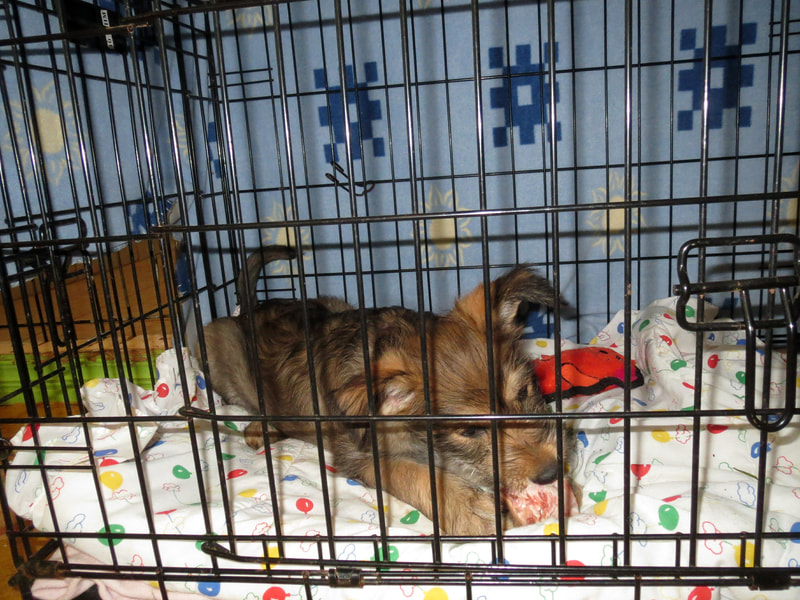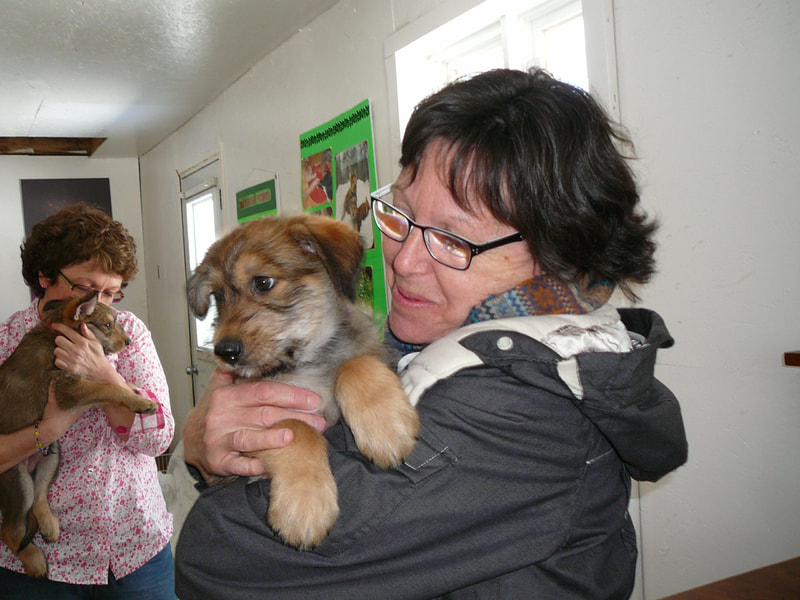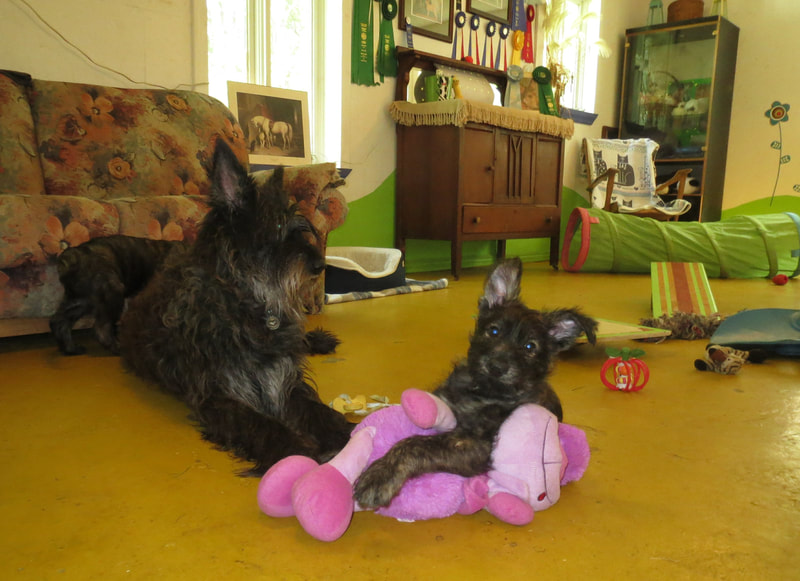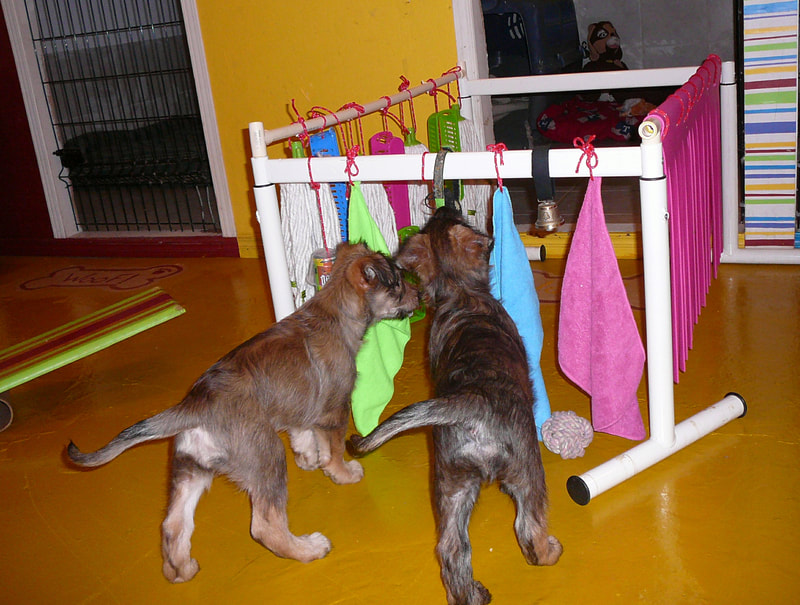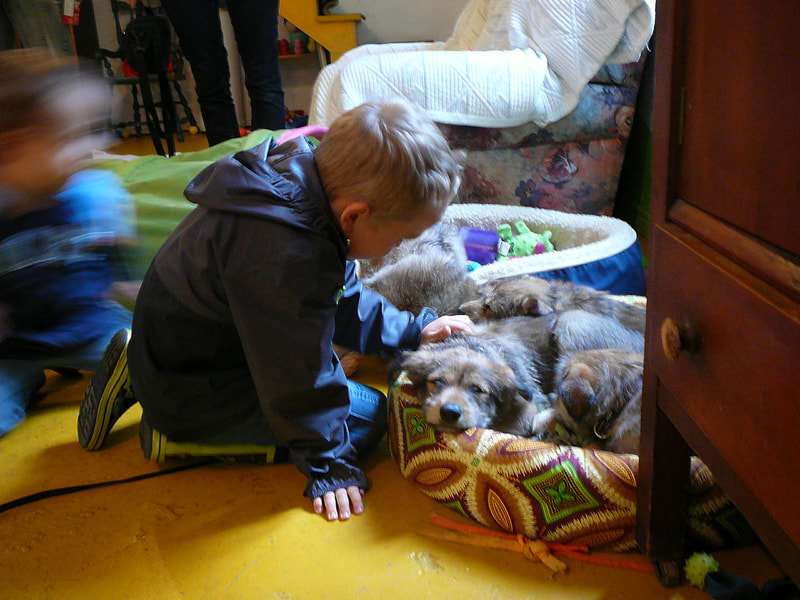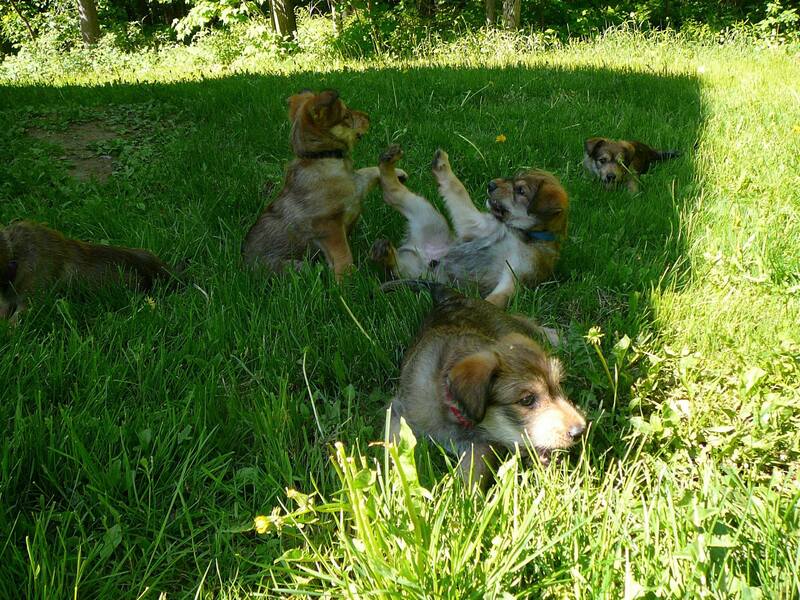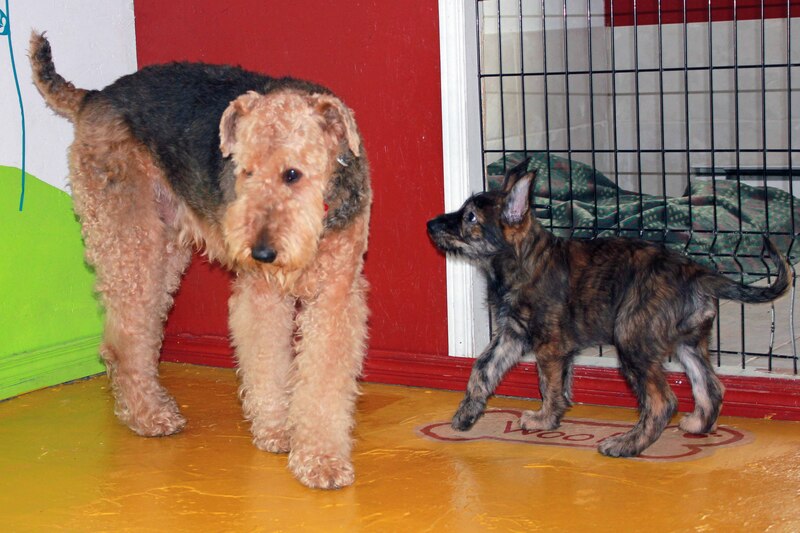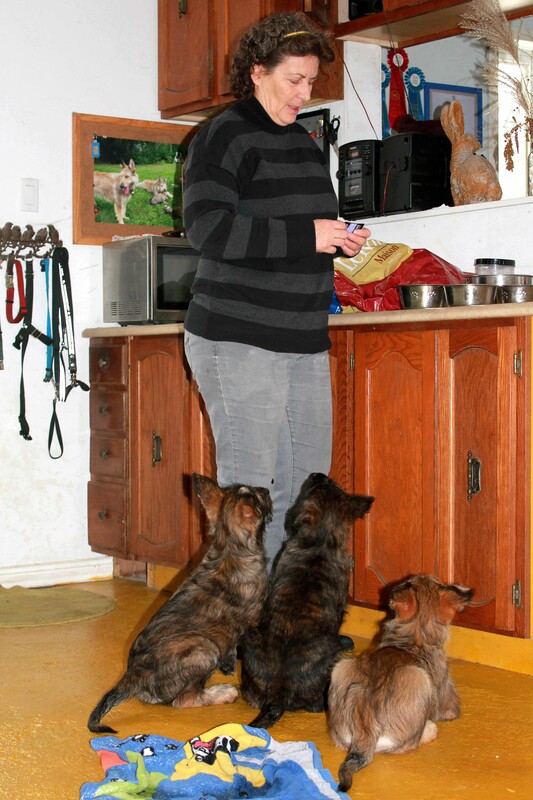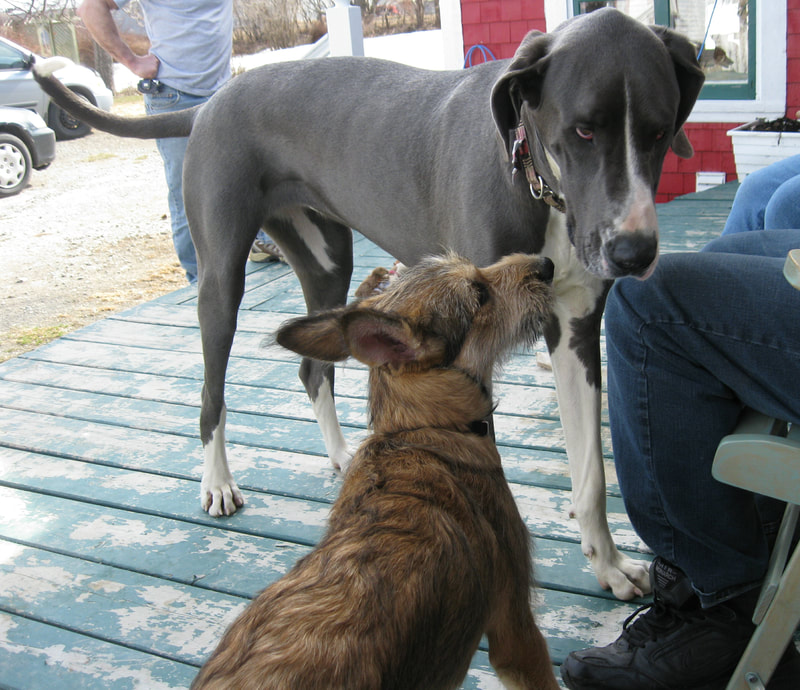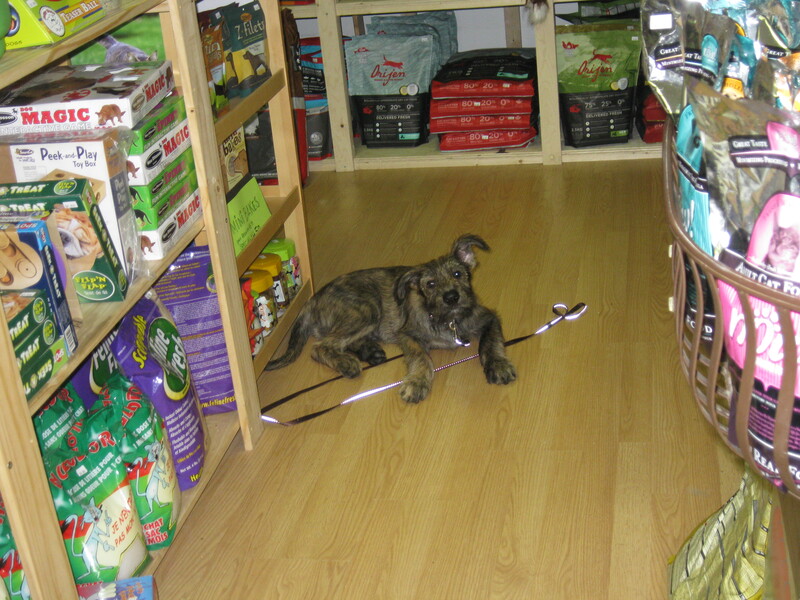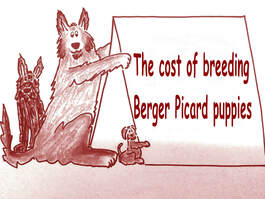Food for thought...
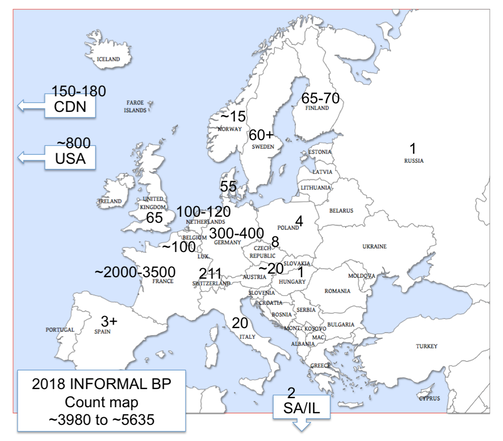 Map created by Angela Stevenson and friends in response to the question: "How many Picards worldwide?" asked by the "We love our Berger Picard" Facebook community.
Map created by Angela Stevenson and friends in response to the question: "How many Picards worldwide?" asked by the "We love our Berger Picard" Facebook community.
How rare is the Berger Picard?
When I first approached the world of Berger Picards there were concerns about the future of this breed. I will always remember one of the Presidents of the French breed club saying that if we wanted the breed to prosper, all Berger Picard bitches should have at least one litter. At that time I thought it was a pretty extreme measure, but it had the benefit of increasing numbers and diversifying the gene pool. Although that suggestion was never implemented, the number of Picards has increased significantly, mainly in the countries bordering France, as well as in the U.S.A. and Canada. Nevertheless, itremains a rare breed. In 2018 the question "How many Picards are there worldwide?" was put to the Picard community. The results of this informal survey gave numbers that I believe are quite close to reality. In an attempt to compare the Picard with other more widespread breeds, let's look at numbers. In 2018, seven thousand five hundred and fifty-one Labrador Retrievers were born and registered with the Canadian Kennel Club. Now, if we compare this with the numbers of Berger Picards born and registered in Canada for the same year, we have a total of eleven puppies. Yes, the Labrador retriever is the most popular dog in Canada, but of the hundred and eighty four breeds registered with the CKC, only twenty breeds had eleven puppies or less in 2018. Over the last ten years an average of 18 Berger Picard puppies are born in Canada per year.
When I first approached the world of Berger Picards there were concerns about the future of this breed. I will always remember one of the Presidents of the French breed club saying that if we wanted the breed to prosper, all Berger Picard bitches should have at least one litter. At that time I thought it was a pretty extreme measure, but it had the benefit of increasing numbers and diversifying the gene pool. Although that suggestion was never implemented, the number of Picards has increased significantly, mainly in the countries bordering France, as well as in the U.S.A. and Canada. Nevertheless, itremains a rare breed. In 2018 the question "How many Picards are there worldwide?" was put to the Picard community. The results of this informal survey gave numbers that I believe are quite close to reality. In an attempt to compare the Picard with other more widespread breeds, let's look at numbers. In 2018, seven thousand five hundred and fifty-one Labrador Retrievers were born and registered with the Canadian Kennel Club. Now, if we compare this with the numbers of Berger Picards born and registered in Canada for the same year, we have a total of eleven puppies. Yes, the Labrador retriever is the most popular dog in Canada, but of the hundred and eighty four breeds registered with the CKC, only twenty breeds had eleven puppies or less in 2018. Over the last ten years an average of 18 Berger Picard puppies are born in Canada per year.
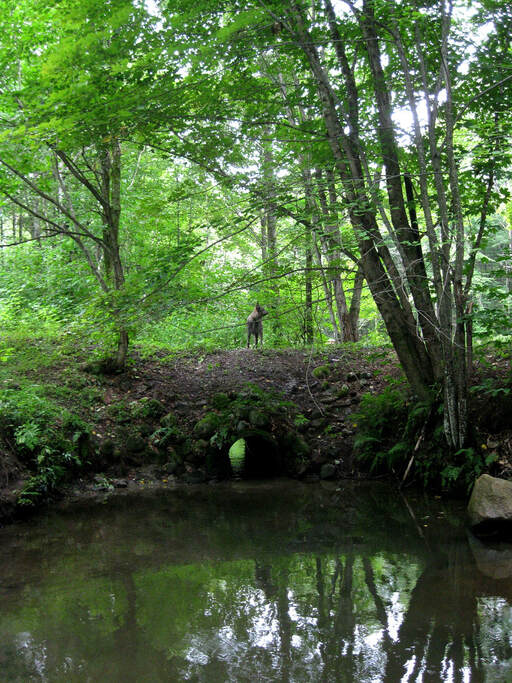
Why is the Berger Picard so rare?
There is no one defining factor to explain the rareness of the Berger Picard, but rather a combination of unfavourable elements that have contributed to keeping their numbers down. A limited gene pool, the breed being only recently recognized in many countries, and the fact that Berger Picard puppies do not remain round and cuddly for very long, but rapidly turn into all legs and ears awkward pups. These are only a few of the possible culprits for the rareness of the breed. As a breeder, the problems I've experienced the most are related to the female reproductive system. I have had bitches who simply would not accept to breed, others with vaginal stricture rendering penetration by the male and natural whelping impossible, cases of reabsorbed puppies. The most insidious issue affecting a very large number of female Picards is uterine inertia. The bitch will dilate when the time comes to give birth, but the uterus does not contract efficiently to push the puppies out of the womb. An emergency c-section is then required in order to save the litter and the mother. Being a breed with some reproductive issues, combined with the fact that the Picard is not a breed suitable for everyone, may have contributed to discouraging potential breeders from investing time, money, and energy in this rare breed.
There is no one defining factor to explain the rareness of the Berger Picard, but rather a combination of unfavourable elements that have contributed to keeping their numbers down. A limited gene pool, the breed being only recently recognized in many countries, and the fact that Berger Picard puppies do not remain round and cuddly for very long, but rapidly turn into all legs and ears awkward pups. These are only a few of the possible culprits for the rareness of the breed. As a breeder, the problems I've experienced the most are related to the female reproductive system. I have had bitches who simply would not accept to breed, others with vaginal stricture rendering penetration by the male and natural whelping impossible, cases of reabsorbed puppies. The most insidious issue affecting a very large number of female Picards is uterine inertia. The bitch will dilate when the time comes to give birth, but the uterus does not contract efficiently to push the puppies out of the womb. An emergency c-section is then required in order to save the litter and the mother. Being a breed with some reproductive issues, combined with the fact that the Picard is not a breed suitable for everyone, may have contributed to discouraging potential breeders from investing time, money, and energy in this rare breed.
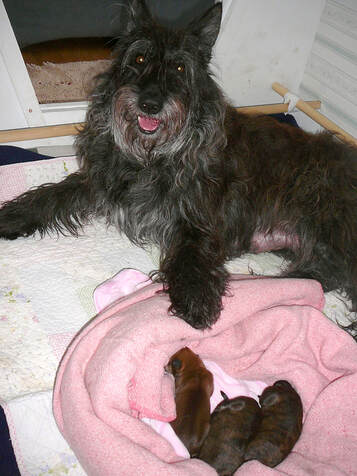
Betterment of the breed...
When I first embarked on this venture I had a few ideas that have since been challenged. I think the most life changing one is the reason why I have been breeding Picards. I started off with the idea that I would put all my heart into working for the betterment of the breed. What a presumptuous idea that was... Who am I to think I could, or even had the right, to improve or alter in any way what generations of hard working farm dogs had passed down. My priorities have evolved; I have a better understanding of the role I can play in the future of this breed I love. Shelters are full of dogs. I do not want to add to the problem: I want to be part of the solution. I want to be able to take care of each single puppy I produce, and keep an eye on them for their entire life. I breed to preserve the integrity of the Berger Picard, with all his qualities and faults. Remember it's a package deal! I protect by doing my best to breed within the breed standard and with the future welfare of the breed in mind; and I promote the breed in the most honest and transparent way I can. I leave the "betterment of a breed" to all those "wizards of dogs" trying to create new designer breeds...
When I first embarked on this venture I had a few ideas that have since been challenged. I think the most life changing one is the reason why I have been breeding Picards. I started off with the idea that I would put all my heart into working for the betterment of the breed. What a presumptuous idea that was... Who am I to think I could, or even had the right, to improve or alter in any way what generations of hard working farm dogs had passed down. My priorities have evolved; I have a better understanding of the role I can play in the future of this breed I love. Shelters are full of dogs. I do not want to add to the problem: I want to be part of the solution. I want to be able to take care of each single puppy I produce, and keep an eye on them for their entire life. I breed to preserve the integrity of the Berger Picard, with all his qualities and faults. Remember it's a package deal! I protect by doing my best to breed within the breed standard and with the future welfare of the breed in mind; and I promote the breed in the most honest and transparent way I can. I leave the "betterment of a breed" to all those "wizards of dogs" trying to create new designer breeds...
the defining early stages of a puppy's life
Helping puppies become confident dogs
One of the most important tasks for a breeder is preparing the puppies to live outside their little siblings` and mom's circle, especially when we are dealing with a breed that tends to be aloof.
The active part of my work really starts when the puppies are born. I camp by the whelping box for the first two weeks, taking notes and observing the innate behaviours of the puppies. Then I slowly see emerge the acquired behaviours and the personalities of each puppy. Learning who these puppies are, and assessing their specific potential is essential information. It will set the base for what I can do for each puppy in order to enable him to express that potential to its fullest, and determine in which home he will thrive.
Puppies are born very immature and helpless; they cannot hear or see, nor can they regulate their body temperature. The only reflex they have at birth is to suckle and crawl to find warmth. Their little brains have all the parts they will need to become adult dogs but the puzzle still has to be built. The first two weeks of a puppy's life is a time of great change. They seem to be just sleeping and getting bigger but in fact a magical, and invisible task is going on: neurons are connecting with the help of the synapses and building paths for thoughts. Three kinds of stimulation have been identified that impact and influence how an individual will develop; Early neurological stimulation, socialization and enrichment.
Early Neurological Stimulation
As the human caregiver for these puppies I can help them, even in this early stage of life. From the third to the sixteenth day puppies undergo a period of rapid neurological growth. By doing a series of exercises which are designed to stimulate the neurological system we give the puppies an advantage in life which translates to the following benefits: improved cardiovascular performance, stronger heart beats, stronger adrenal glands, more tolerance to stress, and greater resistance to disease. These exercises are known as the early neurological stimulation or bio-sensor program. This program is performed one a day, with caution as I do not want to overstimulate the puppies, and is preceded and followed by lots of cuddling.
Socialization
If the first development period only lasts thirteen days, the second, socialization, is a little longer and takes place between the fourth and sixteenth weeks of age. The lack of adequate social stimulation, such as handling, mothering and contact with others, has huge adverse effects on social and psychological development. As the puppies are in my care for the larger part of this critical period, I put a lot of energy into enhancing their environment as much as possible. The puppies are reared in a quiet room for the first three weeks, then they are moved to the dining room where they are in the middle of the daily traffic; they experience new sounds, smells, and textures, and receive visitors. At six weeks they are moved to the kennel where they can benefit from an enriched environment. Tools such as wobble boards, balance boards, tunnels, and sensory stimulation parks are provided to develop their physical abilities, and their confidence. In the house the puppies have met many visitors, but always in small numbers at a time. The kennel gives us the opportunity to put on real puppy parties with larger groups of people. Every year I think of something new to help the puppies learn to deal with frustrations, find solutions to problems, develop self-control and become confident adults. There is no one rule, or unique method for socialization or even training, but there is one essential key to unlocking your dogs full potential: observation and adjustment. Each dog has different needs and learns in a different way. Reading your dog and adjusting your actions to his reaction is essential. It's hard to explain everything that I do during the socialization period with the pups so here are a few pictures that will help you to understand the life of your puppy before he goes to your home.
Enrichment
The third and final stage in the process of growth and development is called enrichment. Unlike the first two stages it has no time limit, should, and must, go on throughout the dogs entire life. Enrichment is a term which has come to mean the positive sum of experiences which have a cumulative effect upon the individual. Enrichment experiences typically involve exposure to a wide variety of interesting, novel, and exciting experiences with regular opportunities to freely investigate, manipulate, and interact with them. The role of the new puppy owner is to finalize the socialization period and make sure the dog has proper enrichment on a regular basis. Dogs must all be active members of their social unit and have their job to do. Owners invest a lot of time in bounding with and training their dog in the first years of his life, but that investment of time should not end when the dog is well trained. Loneliness and boredom will set in if the dog always does the same walk, on the same path, at the same time. Diversity is not only beneficial for humans; dogs need it in order to stay alert and happy. The resulting behavior of boredom manifests itself in many forms; the most obvious are chewing, destruction of property, endless barking, and hard-to-control behaviours; but the one that really breaks my heart is withdrawal, the dog simply gives up on trying to get his human to interact with him. Remember dogs are social animals and they need their pack...
One of the most important tasks for a breeder is preparing the puppies to live outside their little siblings` and mom's circle, especially when we are dealing with a breed that tends to be aloof.
The active part of my work really starts when the puppies are born. I camp by the whelping box for the first two weeks, taking notes and observing the innate behaviours of the puppies. Then I slowly see emerge the acquired behaviours and the personalities of each puppy. Learning who these puppies are, and assessing their specific potential is essential information. It will set the base for what I can do for each puppy in order to enable him to express that potential to its fullest, and determine in which home he will thrive.
Puppies are born very immature and helpless; they cannot hear or see, nor can they regulate their body temperature. The only reflex they have at birth is to suckle and crawl to find warmth. Their little brains have all the parts they will need to become adult dogs but the puzzle still has to be built. The first two weeks of a puppy's life is a time of great change. They seem to be just sleeping and getting bigger but in fact a magical, and invisible task is going on: neurons are connecting with the help of the synapses and building paths for thoughts. Three kinds of stimulation have been identified that impact and influence how an individual will develop; Early neurological stimulation, socialization and enrichment.
Early Neurological Stimulation
As the human caregiver for these puppies I can help them, even in this early stage of life. From the third to the sixteenth day puppies undergo a period of rapid neurological growth. By doing a series of exercises which are designed to stimulate the neurological system we give the puppies an advantage in life which translates to the following benefits: improved cardiovascular performance, stronger heart beats, stronger adrenal glands, more tolerance to stress, and greater resistance to disease. These exercises are known as the early neurological stimulation or bio-sensor program. This program is performed one a day, with caution as I do not want to overstimulate the puppies, and is preceded and followed by lots of cuddling.
Socialization
If the first development period only lasts thirteen days, the second, socialization, is a little longer and takes place between the fourth and sixteenth weeks of age. The lack of adequate social stimulation, such as handling, mothering and contact with others, has huge adverse effects on social and psychological development. As the puppies are in my care for the larger part of this critical period, I put a lot of energy into enhancing their environment as much as possible. The puppies are reared in a quiet room for the first three weeks, then they are moved to the dining room where they are in the middle of the daily traffic; they experience new sounds, smells, and textures, and receive visitors. At six weeks they are moved to the kennel where they can benefit from an enriched environment. Tools such as wobble boards, balance boards, tunnels, and sensory stimulation parks are provided to develop their physical abilities, and their confidence. In the house the puppies have met many visitors, but always in small numbers at a time. The kennel gives us the opportunity to put on real puppy parties with larger groups of people. Every year I think of something new to help the puppies learn to deal with frustrations, find solutions to problems, develop self-control and become confident adults. There is no one rule, or unique method for socialization or even training, but there is one essential key to unlocking your dogs full potential: observation and adjustment. Each dog has different needs and learns in a different way. Reading your dog and adjusting your actions to his reaction is essential. It's hard to explain everything that I do during the socialization period with the pups so here are a few pictures that will help you to understand the life of your puppy before he goes to your home.
Enrichment
The third and final stage in the process of growth and development is called enrichment. Unlike the first two stages it has no time limit, should, and must, go on throughout the dogs entire life. Enrichment is a term which has come to mean the positive sum of experiences which have a cumulative effect upon the individual. Enrichment experiences typically involve exposure to a wide variety of interesting, novel, and exciting experiences with regular opportunities to freely investigate, manipulate, and interact with them. The role of the new puppy owner is to finalize the socialization period and make sure the dog has proper enrichment on a regular basis. Dogs must all be active members of their social unit and have their job to do. Owners invest a lot of time in bounding with and training their dog in the first years of his life, but that investment of time should not end when the dog is well trained. Loneliness and boredom will set in if the dog always does the same walk, on the same path, at the same time. Diversity is not only beneficial for humans; dogs need it in order to stay alert and happy. The resulting behavior of boredom manifests itself in many forms; the most obvious are chewing, destruction of property, endless barking, and hard-to-control behaviours; but the one that really breaks my heart is withdrawal, the dog simply gives up on trying to get his human to interact with him. Remember dogs are social animals and they need their pack...

